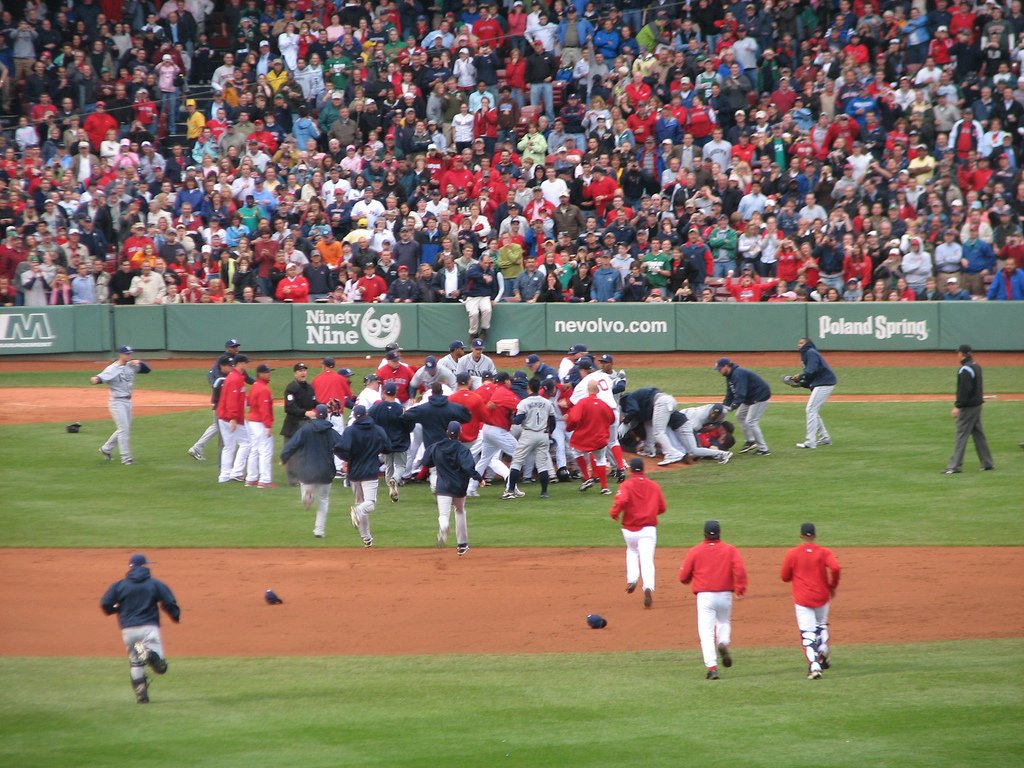The Pain of Healing

Bench-clearing brawl on June 5, 2008 game between the Boston Red Sox and the Tampa Bay Rays
A pitcher throws a 99-mph fastball and nails the batter between the shoulder blades. The batter charges the mound and benches empty as the pitcher shouts, “It is time for unity and healing!”
A gunman first takes out the school security specialist and then walks through the hallways, shooting teachers and students. Many are killed before the gunman takes his own life. In legislative chambers across the country, lawmakers decry calls for gun control and say, “How dare you politicize this tragedy. It is time for unity and healing.”
A patient comes into a doctor’s office with a large gash on their leg. The wound is clearly infected. The doctor stitches up the wound while the patient’s dumbfounded partner asks what in the world the doc is doing. “I’m a healer,” the doc says, “No need to inflict additional pain by cutting away the dead flesh and infected area. It is time for healing.”
One spouse diverts a significant portion of the couple’s money into a private account and spends prodigally. The other spouse uncovers the deception and confronts their partner. The offending spouse says, “Well, that’s in the past now, I guess. No need to account for the money or my behavior. C’mon, let’s start the healing, Babe.”
A gardener, frustrated with weeds and pests, spreads powerful killing agents across the garden beds and, for good measure, over the whole yard. The gardener does the same, year after year, while yields decline and bees are hardly ever seen. The gardener takes a soil sample to the local university farm program for analysis. “Your soil is dead,” the technician informs the gardener. “Hmm,” they reply. “Well, I guess it is time for healing.”
No, no it is not time until we deal with the pain. The desire for healing after injury is understandable, but there are challenging, difficult steps to get there, which often require courage and persistence.
Healing in any relationship requires:
- Diagnosing what the injury is and devising a fitting treatment plan. Does the wound require soap and a bandage or 10 hours of surgery? Does healing a relationship require a series of intentional date nights or overcoming childhood traumas that derail and steal joy and energy from the present? A fitting treatment requires a correct diagnosis.
- More pain. Infections must be disinfected or excised. Dead soil requires an enormous level of work, the addition of healthy soil ingredients, and years in order to be alive again. I saw the docs pulling my daughter’s dislocated elbow back into place while she, sedated, still cried in pain until the maneuver was completed. I know congregations where, generations after a trauma such as sexual abuse or a pastor’s suicide, they have not healed because they have been unable to feel and deal with the pain.
Public calls for healing are often tied to an implicit demand for forgiveness, for throwing away the claim that a debt needs to be paid. It is strange that such appeals often come from Christians. In the Bible and in Christian theology, grace is not free and forgiveness is not offered without cost. While we Christians differ in how we interpret the meaning of the cross, we mostly agree that the cross represents a great cost, great pain.
In personal and social life, wanting to move from injury to healing, or healed, without incurring more pain on the journey is like moving from Palm Sunday to Easter Sunday without going through the pain of Holy Week.
Before there can be reconciliation, there must be confession, which is painful; repentance, which is painful; penance, which is painful; forgiveness, which is painful.
It would be wonderful if the nation’s healing would begin now. But I don’t think we, the people, are ready to face and experience the layers of pain necessary in order to diagnose, devise a treatment plan, and persist.
However, the nation’s denial need not inhibit you or the congregation you know best from facing the pain the nation cannot and leading the way for those who may be encouraged by your courage.
PHOTO CREDIT: User Kevin Bedell on Flickr, CC BY-SA 2.0, via Wikimedia Commons
Dr. Gary Peluso-Verdend is president emeritus at Phillips Theological Seminary and is the executive director of the seminary’s Center for Religion in Public Life. The opinions expressed in this blog are those of the author. Learn more about the Center’s work here and about Gary here.


Comments are closed.